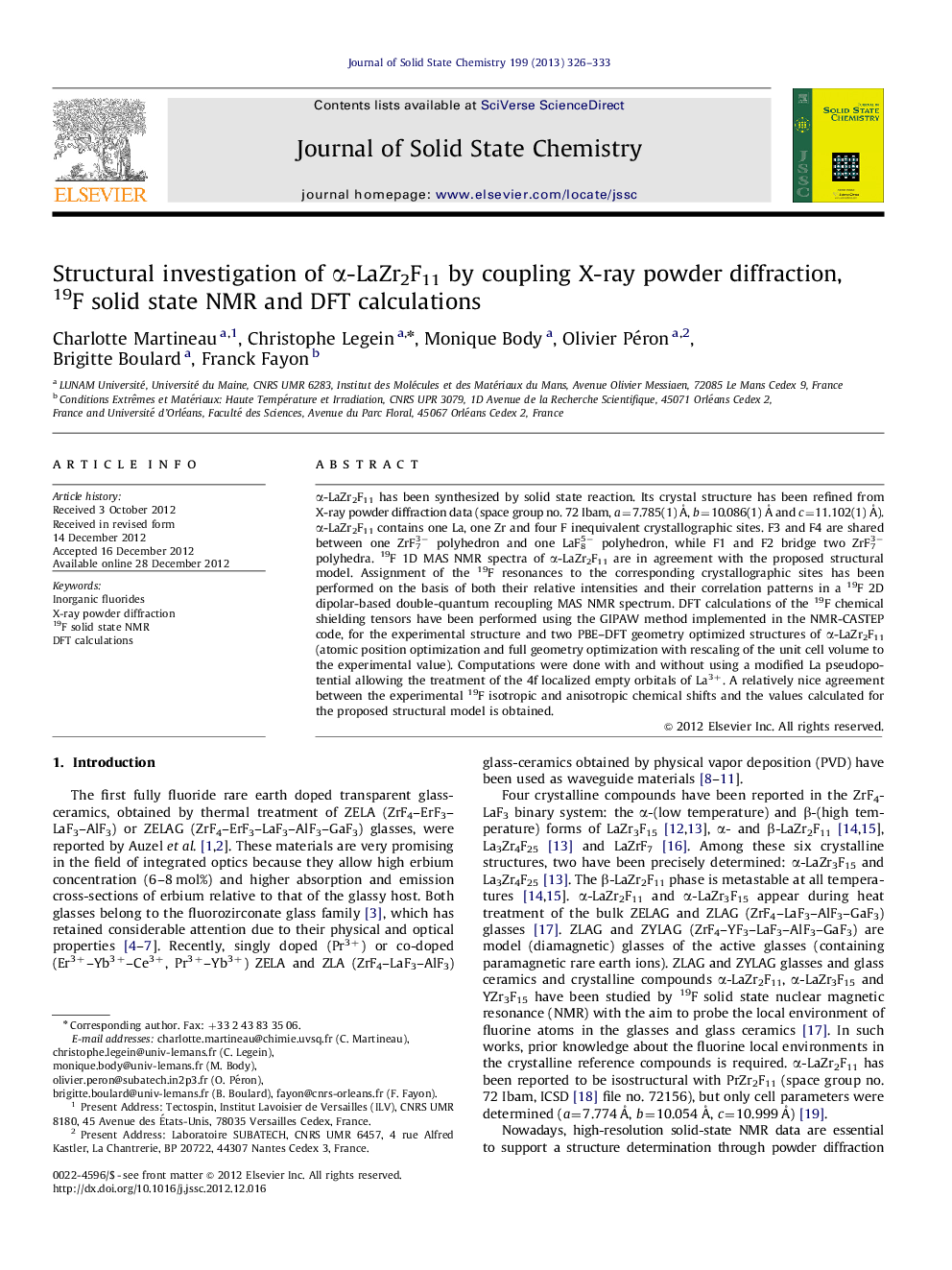| Article ID | Journal | Published Year | Pages | File Type |
|---|---|---|---|---|
| 1330016 | Journal of Solid State Chemistry | 2013 | 8 Pages |
α-LaZr2F11 has been synthesized by solid state reaction. Its crystal structure has been refined from X-ray powder diffraction data (space group no. 72 Ibam, a=7.785(1) Å, b=10.086(1) Å and c=11.102(1) Å). α-LaZr2F11 contains one La, one Zr and four F inequivalent crystallographic sites. F3 and F4 are shared between one ZrF73− polyhedron and one LaF85− polyhedron, while F1 and F2 bridge two ZrF73− polyhedra. 19F 1D MAS NMR spectra of α-LaZr2F11 are in agreement with the proposed structural model. Assignment of the 19F resonances to the corresponding crystallographic sites has been performed on the basis of both their relative intensities and their correlation patterns in a 19F 2D dipolar-based double-quantum recoupling MAS NMR spectrum. DFT calculations of the 19F chemical shielding tensors have been performed using the GIPAW method implemented in the NMR-CASTEP code, for the experimental structure and two PBE–DFT geometry optimized structures of α-LaZr2F11 (atomic position optimization and full geometry optimization with rescaling of the unit cell volume to the experimental value). Computations were done with and without using a modified La pseudopotential allowing the treatment of the 4f localized empty orbitals of La3+. A relatively nice agreement between the experimental 19F isotropic and anisotropic chemical shifts and the values calculated for the proposed structural model is obtained.
Graphical abstract19F 2D DQ-SQ MAS (64 kHz) NMR correlation spectrum of α-LaZr2F11 recorded at a magnetic field of 17.6 T. The projection of the 2D spectrum onto the 19F SQ dimension is shown on top with resonance assignment. Perspective views of trigonal monocaped ZrF73− prisms (blue) and of square-based Archimedes anti-prisms LaF85− (yellow).Figure optionsDownload full-size imageDownload as PowerPoint slideHighlights► The crystal structure of α-LaZr2F11 has been refined from XRPD data. ► 19F resonances have been assigned using a through-space DQ MAS NMR spectrum. ► 19F chemical shielding tensors have been calculated using the GIPAW method. ► Calculated 19F δiso and δcsa values are in agreement with experimental values.
